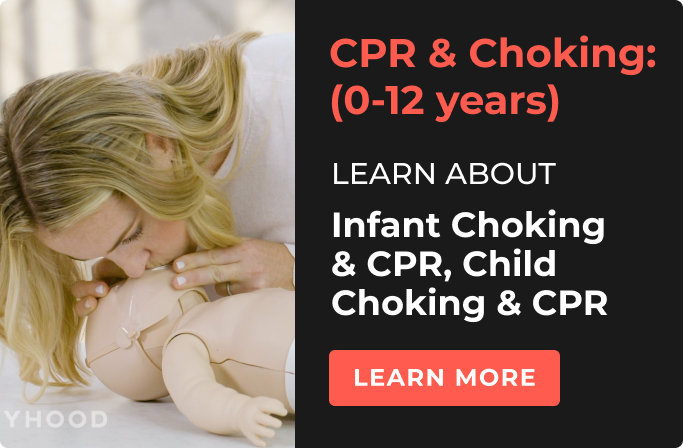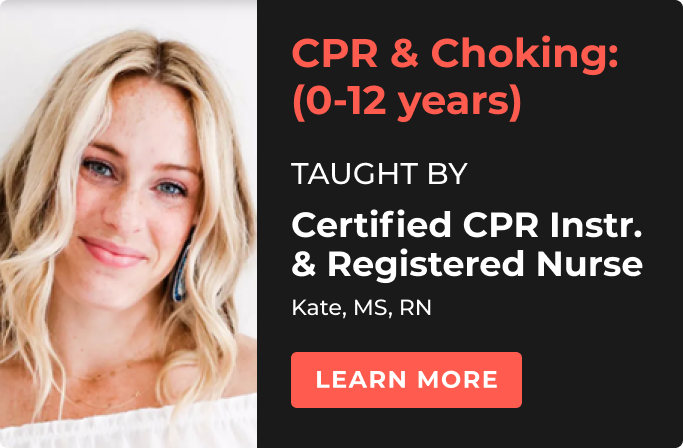It’s a scenario no parent wants to imagine: finding your infant unconscious. But as terrifying as this image is, these kinds of emergencies are important to consider and educate yourself about. The more you can learn in the calm moments, the quicker and more confidently you can act should you ever find yourself in a true life-or-death situation.
So first thing’s first – if you find your infant (under the age of 1) unconscious, your focus is on providing infant CPR until help arrives. The ratio for infant CPR is 30:2, so for every 30 chest compressions, you stop and give 2 rescue breaths. However, effective infant CPR comes down to proper technique, in addition to the correct ratio of breaths to chest compressions.
What’s the proper technique for Infant CPR?
When it comes to proper technique, that’s something that’s best learned through careful, step-by-step demonstrations, which are at the center of our Safety 101 online class. This quick, clear class was designed specifically for parents & caregivers, and walks you through exactly how to perform infant CPR, which is different than the CPR you would perform on a child or an adult.
The rescue breaths, for example, are different. They don’t involve pinching the nose closed and breathing through the mouth, but rather creating a tight seal around both the infant’s nose and mouth with your mouth, then breathing into the mouth. Make sure to tilt the infant’s head back slightly and lift their chin, and as you give a breath check for the chest rising.
As for chest compressions, it’s about being effective, but also mindful that an infant’s body is smaller and more fragile. So rather than pressing down on the chest with the heel of your hand, you instead press with just two fingers – about 1.5 inches deep. When doing the chest compressions, push hard and fast in between the nipple line at the breast bone.
What’s the correct infant CPR ratio?
For all the things that are different though, the CPR ratio for an infant remains the same – 30:2, so for every 30 chest compressions, you stop and give 2 rescue breaths.
Continue this infant CPR ratio sets of 30 compressions followed by 2 rescue breaths until the infant starts breathing, a trained responder arrives, an AED is ready to use, or you are too exhausted to continue.
How can I remember the CPR ratio for an infant child?
Of course, the goal is for all this information – how to perform rescue breaths, chest compressions & the infant CPR ratio – to be second-nature, something you can access in the most dire situations. And the best way to do that is by taking a class, not just once, but once a year. Our Safety 101 online class is a great class for that purpose. It’s something you can watch on your own time, at your own pace, and also easily share with your family & other caregivers, to make sure everyone is prepared to act. It includes real demonstrations, and covers how to give CPR to children 1-12 years of age.




